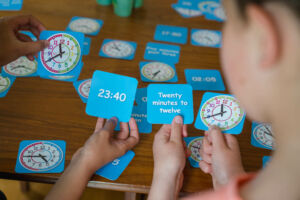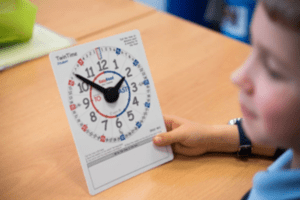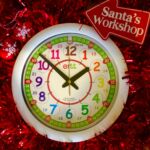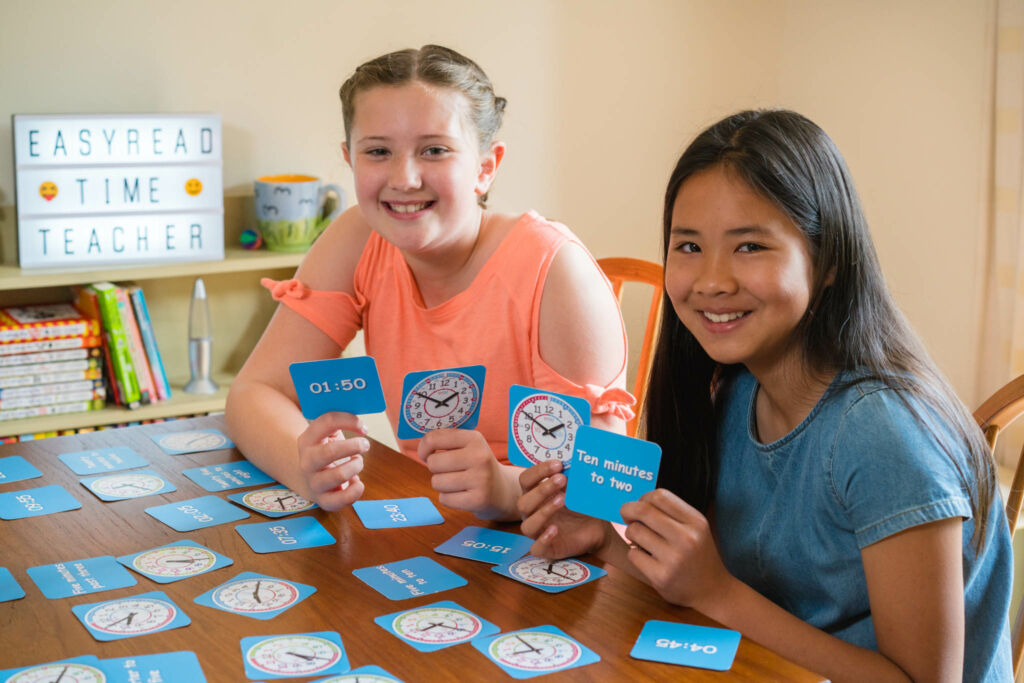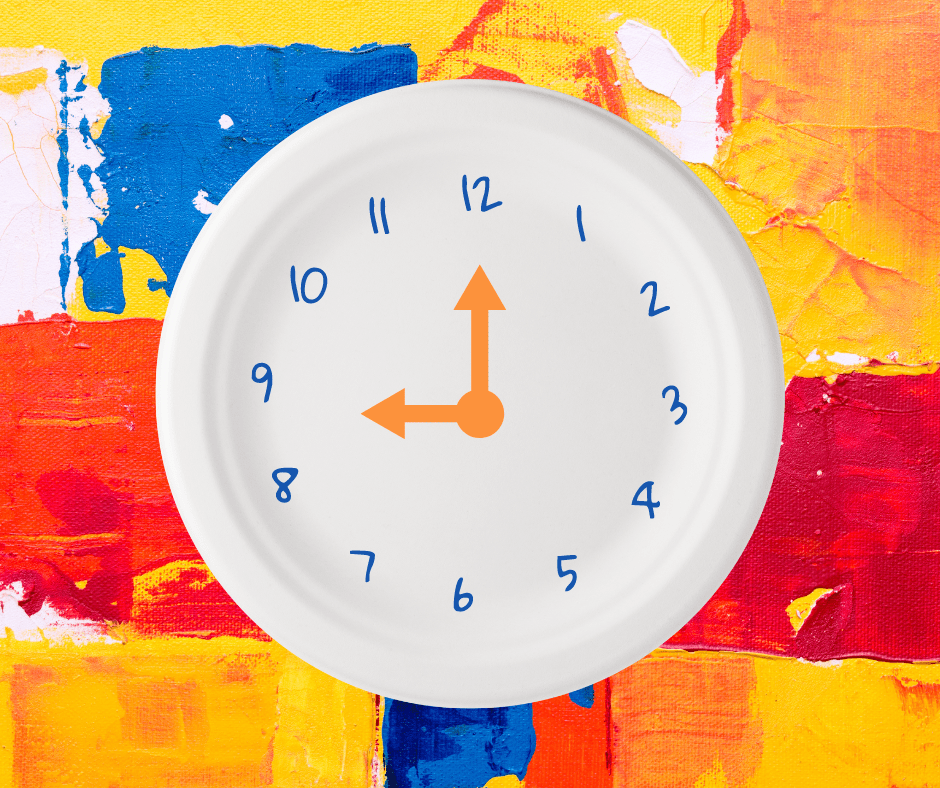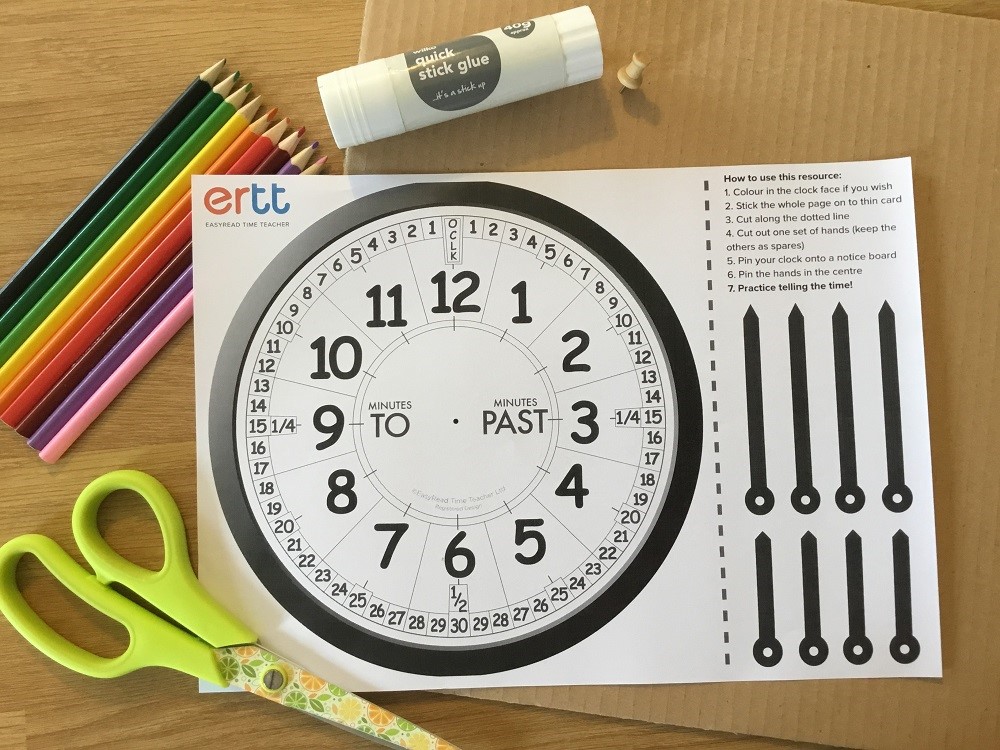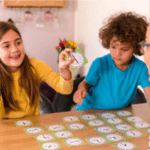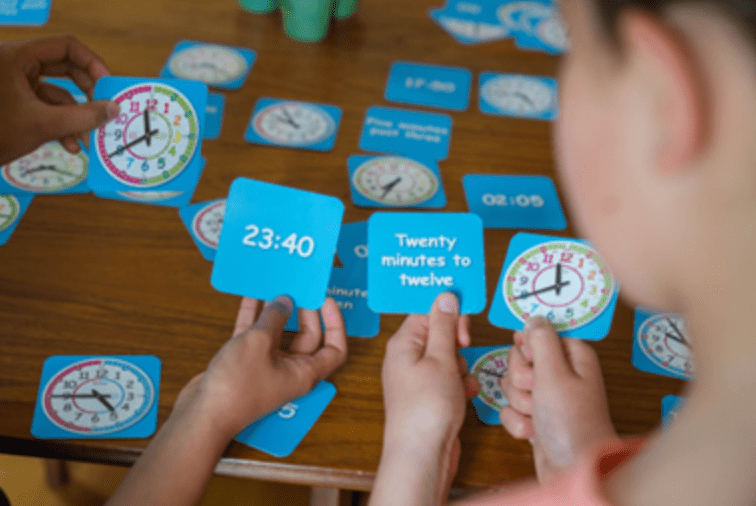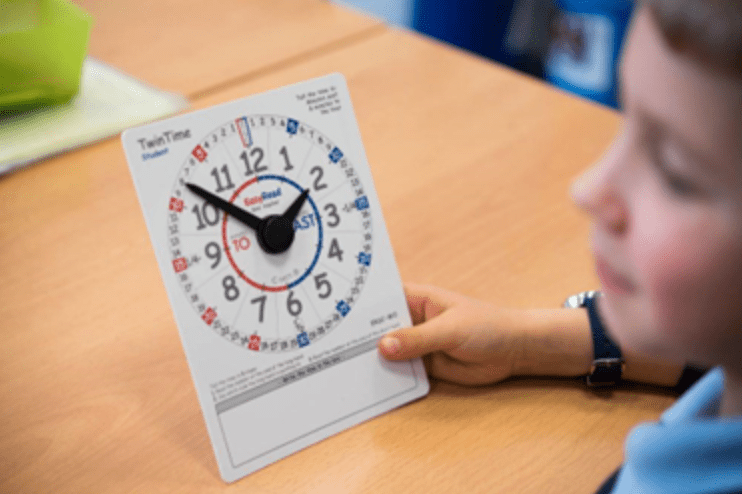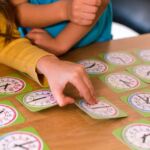
5 games to help children tell the time
Are your children having trouble telling the time? For many children, learning to tell time is one of the first academic concepts they are introduced to and it can be an overwhelming and complex challenge, which is why we offer a range of interactive games that take the pressure off learning. Whether your child prefers snap, bingo, or wants to try our TwinTime Cards, all of our games are teaching aids designed to walk you through the stages of reading the time and help children tell the time while providing hours of enjoyment. By incorporating elements of play and engagement, these time teaching games will ensure that your kids are excited to learn and practice telling the time, so whether your child is just starting out or needs a little extra practice, these games are here to lend a helping hand.
Learning through play
When it comes to teaching children new concepts, it is important to make the learning process interactive and engaging rather than stressing the importance of learning these core skills, as this can be overwhelming for young children. Time-telling is an abstract concept that can be difficult for children to grasp, but as an inherently visual activity, it is easy to incorporate games and activities into the learning process. By reframing this learning as a fun activity, particularly one that is shared with other children or loved ones, children are more likely to retain the information and develop a strong skill set whilst maintaining a positive attitude towards the subject.
At EasyRead, our core goal is to make learning as easy and accessible as possible for people of all ages and abilities. To this end, we have developed a range of time teaching games and teaching aids that are perfect for use at home, in school, or on the go to help children tell the time. Rather than confining learning to desks or the kitchen table, our games are intended to be used as a fun activity for the whole family to enjoy that reinforce our teaching system and make learning easy for all, so let’s explore our range of exciting games together.
1. Snap
Snap is a classic game that has long been one of the easiest games to play, and with our Tell the Time Cards, it is easily adapted to support children as they learn and engage with time. By blending the academic concepts with a fun, stimulating game, parents and children can enjoy a classic game with a twist that can be played by all.
Instead of matching numbers or images, the game revolves around matching cards that share the same time. Each pack of our cards contains 60 playing cards, which between them show 15 different times of the day, for a total number of 4 cards for each time, for a simple game of mix and match that is best played with 3 or more players.
Interested in learning how to play? Here are our instructions:
⦁ Shuffle the cards and deal them all out equally between players, face-down.
⦁ To begin the game, one player turns over the top card from their face-down pile and places it face-up in front of them, reading aloud the time on the card.
⦁ Players repeat this action, one after the other, going clockwise around the group.
⦁ If any two top cards on the players face-up piles read the same time this is a “snap”.
⦁ The first person to say “snap!” and put their hand on the table wins the round. The winner takes all the face-up cards on the table, shuffles them, puts them to the back of their pile and starts the next round.
⦁ The overall winner of the game is the player who is left with the most cards.
Finish up the game by counting up the cards and enjoy a simple yet educational game again and again with our Level 1, Level 2, and Level 1 & 2 sets.
2. Matching pairs
Matching Pairs is a popular memory game, and our Time Cards modify this classic game to teach children how to read the time. Instead of matching identical pictures, our games encourage children to match cards with the same time displayed on them.
This game can be played at home with one or more players, or at school with a classroom of players by following these instructions:
⦁ Shuffle all the cards and spread them across a table face-up.
⦁ Set a timer to three minutes. The player should find as many pairs of matching cards as they can within the time constraint. Two cards showing the same time makes a pair.
⦁ After the three minutes the players should read aloud the times on their matching pairs and count their pairs.
⦁ If there is more than one player, repeat this process for each player and create a league table. The overall winner is the player who finds the most pairs in three minutes.
As a straightforward visual game, this game and Snap are best played with our Level 1 cards, but if you are feeling more confident, then why not try playing with our Level 2 cards to match the time as either minutes past and to, or by how it would appear on the 12/24 hour clock.
3. Buddy-Up
Buddy-Up encourages collaborative learning and teamwork, and in this game, children are encouraged to develop their understanding of how time appears on a clock. The aim of this activity is for all players to find their “Time Buddy”, or whoever has a card that matches their own, and in order to play each participant must be able to clearly identify the time on their own card. This game is best played with a large group of players so try it today by following the instructions below:
⦁ Sort the cards so that each player has one card and a “Time Buddy” eg, with a class of 30 sort 15 pairs.
⦁ Hand a card to each player, players must not show each other their card.
⦁ To find their “Time Buddy”, players must ask each other, ‘what time are you?’
⦁ Players must reply with the time on their card.
⦁ Players who find their “Time Buddy” must form a pair. The game ends when all the players have paired up.
This game not only improves children’s time-reading skills, but it also helps them develop communication and social skills, so pick up a set of our cards today.
4. Bingo
For another time-teaching twist on a classic game, Bingo is easily adapted to help children read and understand time by playing with our cards. As a slightly more complicated game, this particular activity is best played with up to 6 players or groups, and instead of calling out numbers, the caller calls out a list of times and the players mark off the corresponding time on their bingo cards, like so:
⦁ Shuffle all the cards and deal out 9 to each player/ group, face-up on a table.
⦁ Choose who is going to be the ‘caller’. The caller must call out a time from the ‘times list’.
⦁ If any of the players/ groups have a card that matches the time the caller reads out, they should turn it face-down on the table.
⦁ The game is won by the player/ group who is the first to have all their cards face-down. When this happens, shout ‘bingo!’
⦁ The caller should check that the cards of the winning player/group match with the times that have been called out. If the cards do not match, the game should resume.
This game helps children practise reading and recognising different times in a fun and interactive way, and also encourages focus and attention to detail as the players must listen carefully to the caller and quickly locate the corresponding time on their bingo cards.
5. TwinTime Cards
Alongside our time-telling cards, we also offer our specialist TwinTime Student Cards for a hands-on approach to teaching time and introducing primary school numeracy. These innovative cards are double-sided and feature a Past & To dial on one side and a 24-hour time dial on the other, with independently movable hands. Made from high gloss write on wipe off PVC sheet, pupils are encouraged to write down the time displayed on the clock, fostering hands-on learning and putting pupils in control of all their learning.
Ideal for mastering time skills, these cards also facilitate learning to count forwards and backwards from 30, understanding fractions, and counting in 5s and 10s. Available in 15 x 20 cm for pupils and 32 x 39 cm for teachers or adults, they also facilitate classroom-wide demonstrations, as well as one-to-one sessions between parents and children, and are available individually or in boxes of 10 for group activities.
These cards not only help children tell the time and practise reading the time, but it also improves their ability to quickly calculate time intervals and understand the relationship between different times.
Games to help children tell the time
By incorporating these interactive and enjoyable time teaching games into their learning routine, you can make the learning process a fun and memorable experience for your child, so develop their social skills and reinforce their abilities by picking up a pack of our cards and start playing today!
